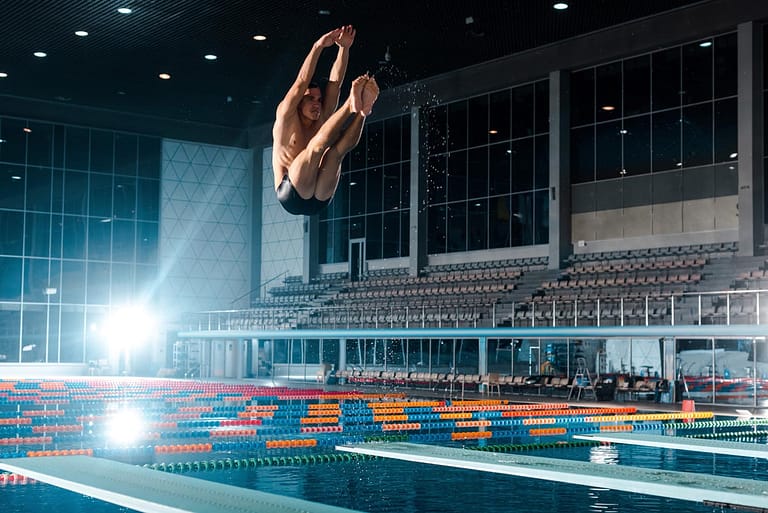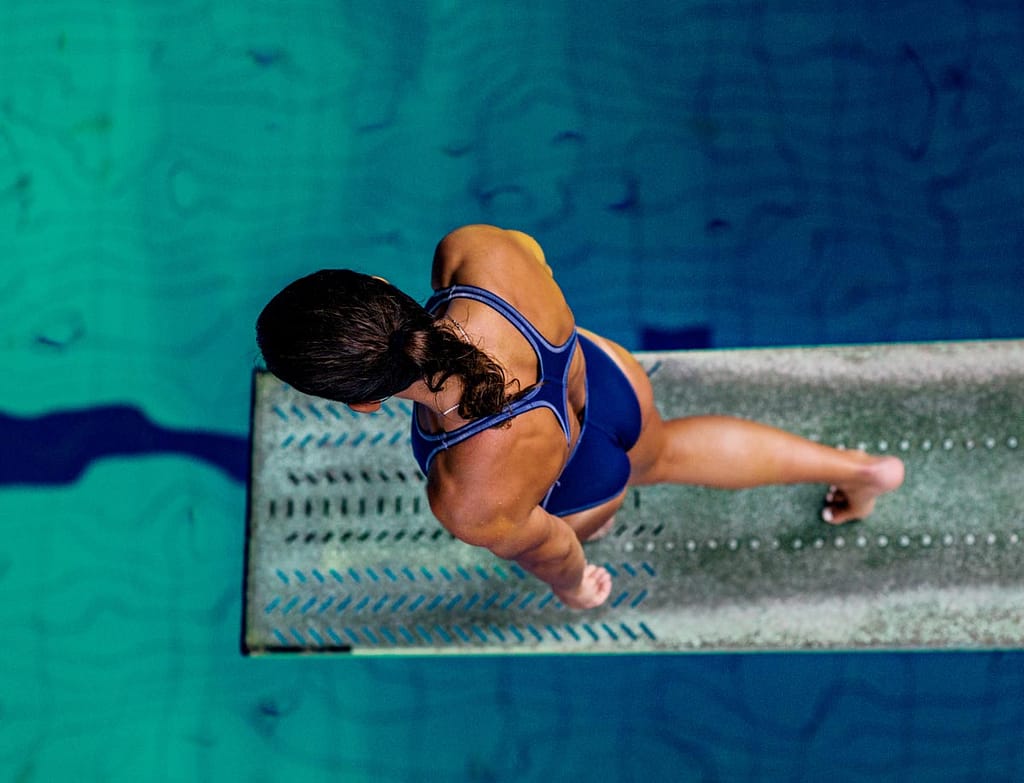What is Diving? A Graceful Sport of Acrobatics and Water
What is diving?A captivating sport. It combines the grace of acrobatics with the thrill of plunging into water. It’s a discipline that requires precision, control, and a fearless spirit. In this article, we’ll explore diving. We’ll cover its history and the physics of a perfect dive.

The Fascinating History of Olympic Diving
Diving has been a part of the Olympic Games since 1904, when it was included as a platform event for men. Over the years, the sport has evolved. It now includes platform and springboard events for both men and women. Greg Louganis won back-to-back gold medals. They are some of the most iconic moments in Olympic diving history. He won them in 1984 and 1988. Also iconic was Fu Mingxia’s dominance in the 1990s.
Diving Events: From Platform to Springboard
There are several different diving events, each with its own unique challenges:
| Event | Height | Description |
|---|---|---|
| Platform | 10 meters | Divers perform dives from a fixed platform |
| Springboard | 3 meters | Divers perform dives from a flexible springboard |
| Synchronized | 10 meters or 3 meters | Two divers perform dives simultaneously |
The Physics Behind a Perfect Dive
A perfect dive is a combination of grace, power, and precision. But there’s also a lot of physics involved. When a diver leaves the platform or springboard, they are a projectile. They are subject to the laws of gravity and motion. The key to a successful dive is to control the body’s position and rotation in the air. Then, you must enter the water with minimal splash.
Mastering the Fundamentals: Diving Techniques and Positions
There are four basic positions in diving: tuck, pike, straight, and free. Each position affects the diver’s speed of rotation and the overall aesthetics of the dive. Divers must also master various techniques, such as:
- Approach: The steps a diver takes before leaving the platform or springboard
- Takeoff: The moment when the diver leaves the platform or springboard
- Flight is the time between takeoff and entry. The diver performs twists and somersaults.
- Entry: The moment when the diver enters the water, aiming for a vertical, rip entry with minimal splash
The Importance of Body Control and Flexibility in Diving
Diving requires exceptional body control and flexibility. Divers must do complex twists and somersaults in midair. Then, they must straighten out for a clean entry into the water. This requires a combination of strength, flexibility, and spatial awareness.
Iconic Olympic Diving Moments and Medalists
Over the years, there have been many unforgettable moments in Olympic diving history. Some of the most iconic include:
- Greg Louganis’ back-to-back gold medals in 1984 and 1988
- Fu Mingxia’s dominance in the 1990s, winning gold in 1992, 1996, and 2000
- Tom Daley’s emotional bronze medal in 2012, after the loss of his father
- Chen Aisen and Shi Tingmao’s sweep of the gold medals for China in 2016

The Mental Aspects of Diving: Focus and Concentration
Diving is as much a mental sport as it is a physical one. Divers must be able to block out distractions and focus solely on their dive. They must also have the mental toughness to recover from mistakes and stay calm under pressure.
Diving Training: Dryland Exercises and Pool Practices
Diving training involves a combination of dryland exercises and pool practices. Dryland exercises help divers build strength, flexibility, and body control. These might include:
- Stretching and yoga
- Trampoline and dryboard work
- Strength training and weightlifting
Practices in the pool allow divers to work on their techniques. They can perfect their dives. This might involve:
- Practicing approaches and takeoffs
- Working on twists and somersaults
- Perfecting entries and reducing splash
Diving’s Global Popularity and Competitive Scene
Diving is a popular sport around the world, with a thriving competitive scene. FINA (Fédération Internationale de Natation) governs the sport. It oversees big events. These include the Olympics, World Championships, World Cup, and World Series.
China, the United States, Russia, and Great Britain are some of the best diving nations. However, the sport is growing in popularity in many other countries as well.
The Evolution of Diving: New Trends and Developments
Like any sport, diving is constantly evolving. Some of the latest trends and developments include:
- The rise of mixed-gender synchronized diving events
- The increasing difficulty and complexity of dives being performed
- Using technology, like video analysis and 3D modeling, to boost training and performance.
Diving is evolving. We can expect more breathtaking performances. We will see even more unforgettable moments in the years to come.
In conclusion, diving is a sport that combines athleticism, artistry, and a touch of daring. Divers use the 10-meter platform and the 3-meter springboard. They keep pushing the limits of what’s possible. They leave audiences amazed and inspired.

